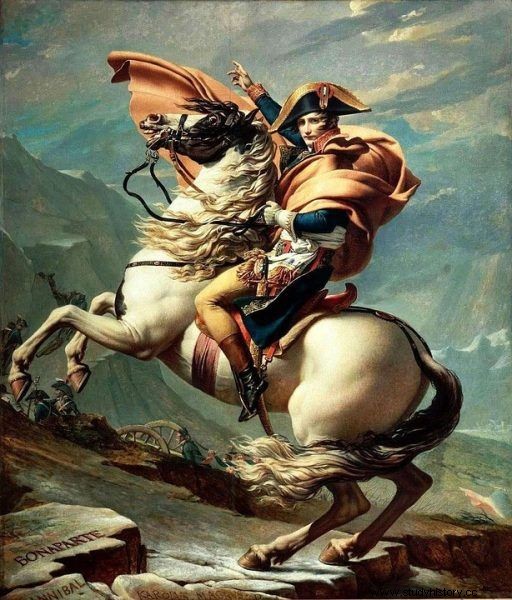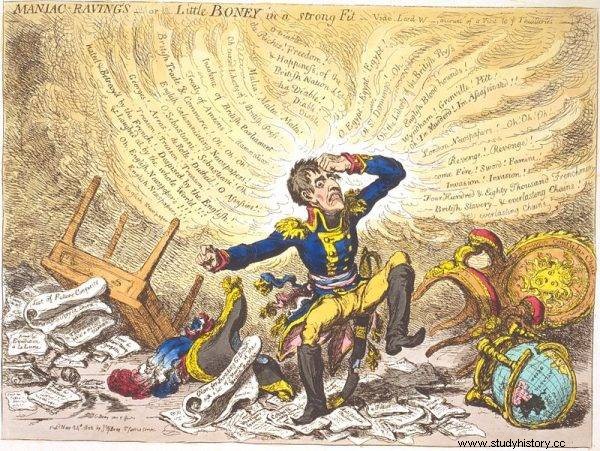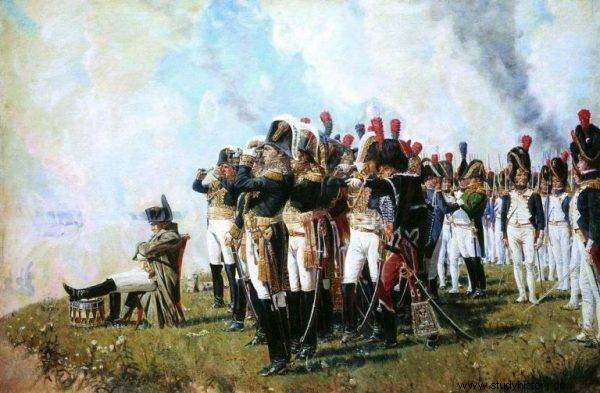Was Napoleon Bonaparte really considered low by the standards of the time? Or maybe someone deliberately understated his height to ridicule him?
The history of the world is full of distortions and understatements. Sometimes things considered facts have little to do with reality. On the other hand, events that seem too eerie to be true turn out to be the most real. In the "Truth or Myth" series, we will attempt to debunk or confirm both these less and more serious historical myths. The story is not as obvious as it seems!
Napoleon Complex
People have always had a tendency to associate a person's physical attributes with his psychological features. Napoleon Bonaparte was also a victim of this type of evaluation. It is with him that the famous complex that extremely short people become pathologically ambitious and power-hungry has been linked. The question of the growth of the French monarch, however, is much more complex than you might think. First of all, the question arises whether Bonaparte was really considered low by the standards of the time? Or maybe someone deliberately understated his height to ridicule him and lead anti-French propaganda?

was Bonaparte really considered low by the standards of the time?
Made-to-measure
Somatometry is "a department of anthropometry dealing with the measurement of the body of a living human" . One of the anthropologists dealing with this field was the outstanding Polish scientist Ireneusz Michalski. In 1949 he stated that a short man could be called a gentleman between 157 cm and 164 cm . The average height was between 165 cm and 169 cm. Currently, however, the statistical European is much taller. In the context of considering how tall Bonaparte was, it is worth knowing that the average French today is about 177 cm tall.
According to the testimony of one of Napoleon's personal doctors, François Carlo Antommarchi, Bonaparte was 5 feet 2 inches at the time of his death ( 5 pieds 2 pouces ). The problem is that at that time growth could be given in both French and British feet. The latter unit was smaller and, according to her indications, Bonaparte would indeed be considered short - it would be approx. 158 cm . Today, however, most researchers argue that the Antommarchie used the French measure. In this variant, Napoleon's height would not look so poor anymore, amounting to approx. 169 cm.

At the time, Napoleon's growth was even above average.
Moreover, it should be remembered that the typical French in the 18th century was much lower. It was estimated to be between 158 cm and 168 cm in height. As you can see at the time, Napoleon's growth was even above average . The myth about the size of the French emperor is not only due to the confusion around the measurement system and how Europeans have grown up over the past 200 years. This issue has a further bottom, which makes the discussion on the Napoleon complex take on a strictly political dimension.
A pen stronger than a sword
In fact, James Gillray is the culprit of all the fuss. This English cartoonist is widely recognized as the father of political caricature. The artist's immensely accurate and witty drawings became so popular that they gained the power to shape public opinion. The greatest victim of Gillray's caricatures was Napoleon Bonaparte. In a graphic from 1798 entitled " Buonaparte hearing of Nelson's Victory swears by his Sword to Extirpate the English from off the Earth" the French ruler still looked quite proportionate. A few years later, in a caricature from 1803, " Maniac-raving's-or-Little Boney in a strong fit "Bonaparte has already been shown as a rather modest figure.
It was then that the process of shaping Napoleon's image as a hysterical little man began. Nickname "Little Boney" permanently stuck to the emperor, and subsequent caricatures, e.g. " The Plumb-pudding in danger or State epicures taking un petit souper" or "Tiddy-Doll, the Great French-Gingerbread-Baker; Drawing Out a New Batch of Kings ” only confirmed this image.

In a caricature from 1803, "Maniac-raving's-or-Little Boney in a strong fit", Bonaparte was already shown as a rather small figure.
Gillray's presentation of Napoleon was obviously due to the English fear of the rise of French power. Mocking the character and short stature of the French ruler turned out to be an exceptionally effective propaganda strategy. Soon other cartoonists and cartoonists picked up on this way of portraying the emperor (" The Empress's wish or Boney puzzled"). Bonaparte himself was to send diplomatic notes to London calling for the censorship of offensive drawings appearing in the press. For obvious reasons, however, his efforts failed. Towards the end of his life, he regretted finally that the caricatures of English cartoonists had done him more harm than all European armies.
Context matters
Apart from the aforementioned sources of the myth about Napoleon's dimensions, there was one more reason why he was considered to be a person of exceptionally despicable height. It resulted from the attitude of the French ruler to his own army and bodyguard. In 1804, Napoleon created the Imperial Guard (in 1807 it included the famous Polish 1st Regiment of Szwoleżerów-Lancers). The soldiers of this elite unit of the French army - apart from exceptional combat skills - were also distinguished by above-average height.
According to the available data, a typical French grenadier was about 180 cm. Well above average. As if that were not enough, the commander of the Consular Guard, the predecessor of the Imperial Guard, was the exceptionally tall (190 cm) Joachim Murat. In such company, Napoleon, whether he wanted it or not, had to be perceived as below average height.
Caring Bonaparte
The nickname he forged among his soldiers - "le petit caporal" (little corporal) - but not because of his physical appearance. During the Battle of Lodi in 1796, when the French stormed the bridge over the Adda River, Bonaparte gained immense respect and recognition. That's when he came to be called "the little corporal."

The nickname "little corporal" stemmed from Napoleon's concern for the fate of French soldiers.
As it happened in the history of wars, soldiers for centuries gave their commanders various more or less flattering nicknames. Caesar was called "the bald adulterer, Wellington was called the" old nose "and Robert E. Lee was called" grandmother. " The nickname "little corporal", which is a bit confusing today, was not a pejorative term and was not associated with Napoleon's short stature. It stemmed from… his personal concern for the fate of French soldiers.
During military inspections, Bonaparte was in the habit of having very frank talks with them and a keen interest in the troubles they were grappling with. He was interested in what they eat, how they feel, whether they receive their pay regularly, etc. This significantly distinguished him from other generals who did not care for the fate of a simple soldier and made the army follow him into fire. Anyone who was not familiar with the care that the French ruler had for the rank and file, nickname "le petit caporal" subconsciously linked to Napoleon's short stature.
Little big man
The myth of Napoleon's short stature can be debunked. The most interesting thing in the history of this rumor is how many different factors influenced its creation. From confusion with the measurement system, to an unlucky nickname, to political propaganda. It is therefore not surprising that this perception of the French emperor has become quite common. The truth is that for his time Bonaparte was of average size . Neither especially tall nor particularly short. Any hint of his inferiority complex can be put between fairy tales, and his successes can be safely attributed to military talent, charisma and political acumen.
Napoleon was short. Myth
Bibliography:
- Roberts, Napoleon - A Life , New York 2014.
- Mcilvenna, Was Napoleon Short? Origins of the Napoleon Complex , History.com (accessed on 28/12/2021).
- Wilde, Was Napoleon Bonaparte Really Short? , Thought.co (accessed on 28/12/2021).
